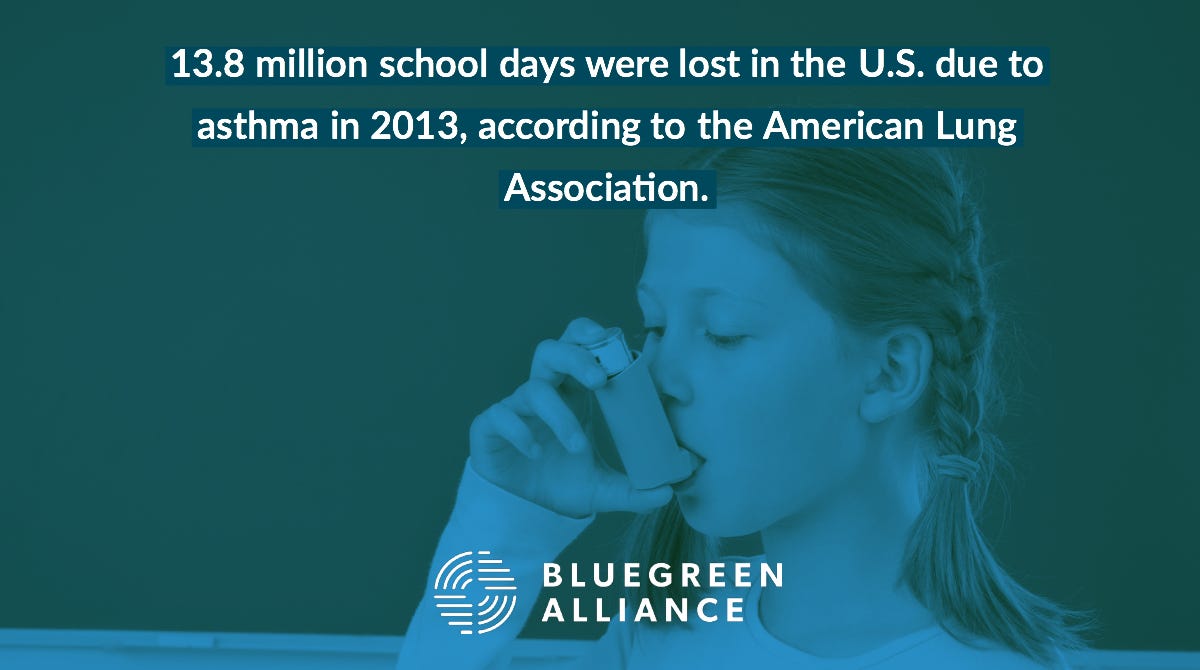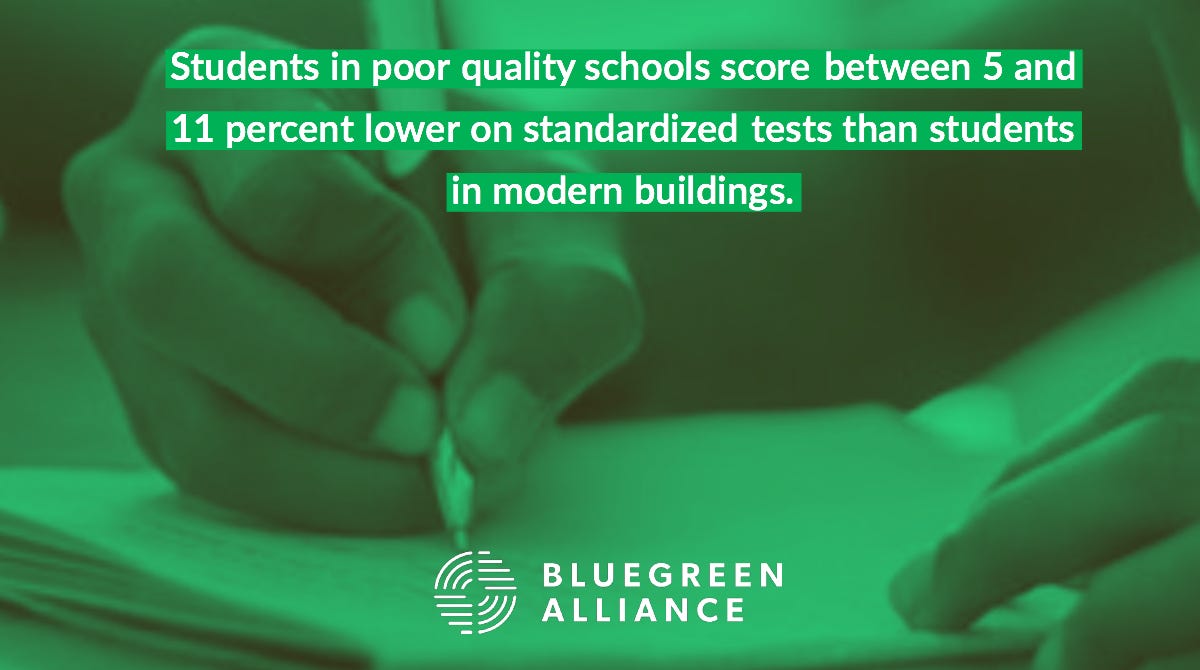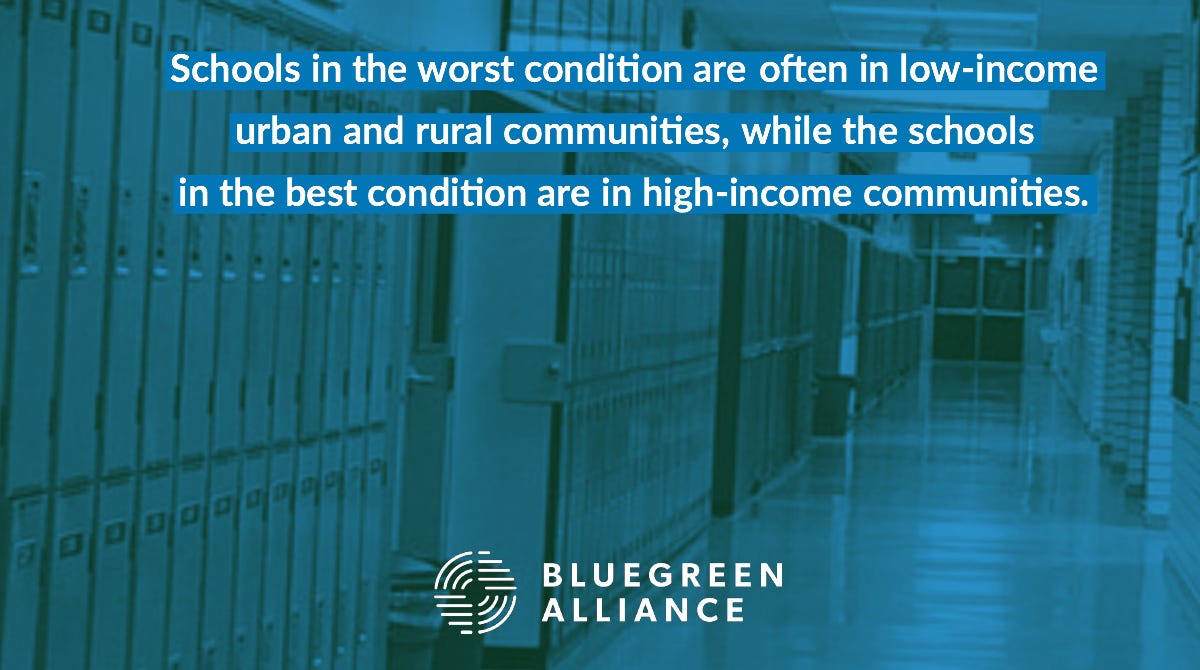4 Ways Your School Building Impacts Your Child’s Future and 1 Way Congress Can Help
A school is a lot things. It’s where your children learn math, science, English, and history. It’s where they make friends and meet mentors. It’s where they star in school plays and score the game-winning basket. What happens in school shapes a child’s future.
But a school isn’t just a backdrop for the big moments of youth; it is more than an abstract “where.” With so many important things happening inside, it’s easy to forget that a school is a building — a vital piece of infrastructure — and like any building, it needs upkeep and maintenance. That’s something that nationwide we’ve been failing to provide.
On average, American students are in school 7 hours a day, 180 days out of the year — not including any extracurricular activities. In a poorly maintained school, that’s time that children can be exposed to mold, lead, pests, and uncomfortable conditions. All of that adds up in ways that can impact children for the rest of their lives. Here are just a few ways.

1. Lead exposure causes irreversible harm to the brain and nervous system
There is no safe blood level of lead for children and even small amounts of lead exposure can cause permanent damage to the developing brain and nervous system of a child, resulting in decreased IQs and diminished academic ability. Yet, the U.S. Environmental Protection Agency still does not require schools to test their water for lead. In 2019, that’s completely unacceptable.
A 2019 report by the Government Accountability Office found that only 43 percent of school districts that responded to a survey test for lead, and 37 percent of those districts found elevated levels. Forty-one percent of districts that responded had not tested for lead in over a year before taking the survey, and 16 percent of districts that responded said they didn’t know if their water had been tested for lead. That level of uncertainty is unacceptable.

2. Failing HVAC systems result in poor air quality
Unacceptable air conditions in schools can be harmful to students’ health. Failing HVAC systems result in poor air circulation, uncomfortable temperatures, and they can spread things like allergens and mold, which have negative health impacts. In 2013, the American Lung Associationreported that 13.8 million school days were lost in the United States due to asthma. Poor air quality in schools contributed to at least some of those absences.

3. Schools in poor condition can lead to poor grades
In 2017, the American Society of Civil Engineers gave the nation’s school infrastructure a “D+.”It’s hard to expect students in schools with poor grades to perform at an A+ level. The quality of school facilities impact student attitudes, health, and academic achievement. In fact, a study by the Council of the Great City Schools found that students in poor quality schools score between 5 and 11 percent lower on standardized tests than students in modern buildings.
Additionally, as of 2013, more than half of the schools in operation in the United States were built before 1970. The needs of students have changed drastically since that time and in many cases districts are not able to keep up with the needed repairs, renovation, and modernizations needed to make schools that were built for baby boomers work for kids today and tomorrow. That shortcoming impacts learning.

4. A lack of investment in school facilities perpetuates inequality
School funding often comes from property taxes, meaning the schools in the worst condition are often in low-income urban and rural communities, while the schools in the best condition are in high-income communities. That means that students in low-income communities are more likely to encounter all of the problems listed above, contributing to the ever-growing inequality in the nation.

Congress needs to help fix this problem. Now.
Students need to learn in a safe, modern, healthy environment. A bill moving in the U.S. House of Representatives — the Rebuild America’s Schools Act of 2019 — would help districts around the country move their schools into the 21stcentury. It includes grants, loan programs, and other funding to help repair America’s schools and increase access to broadband. Local communities shouldn’t have to go it alone. Congress should act now.
Our students deserve better. They deserve a healthy learning environment that can adequately meet the needs of 21st century students, that won’t contribute to inequality, and won’t get them sick.